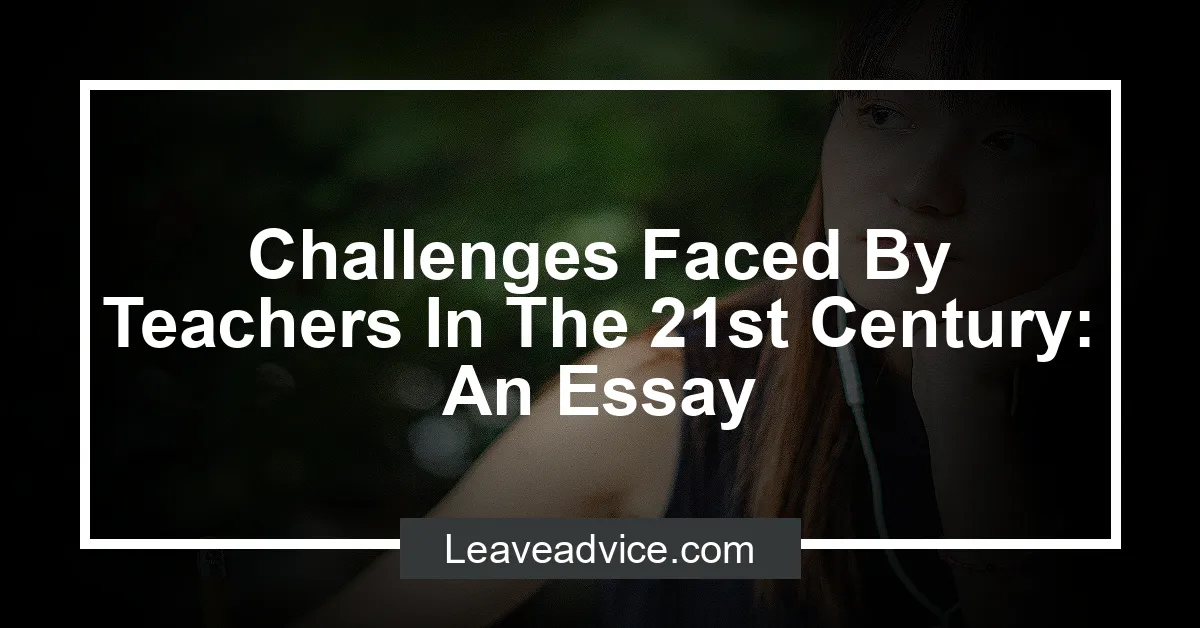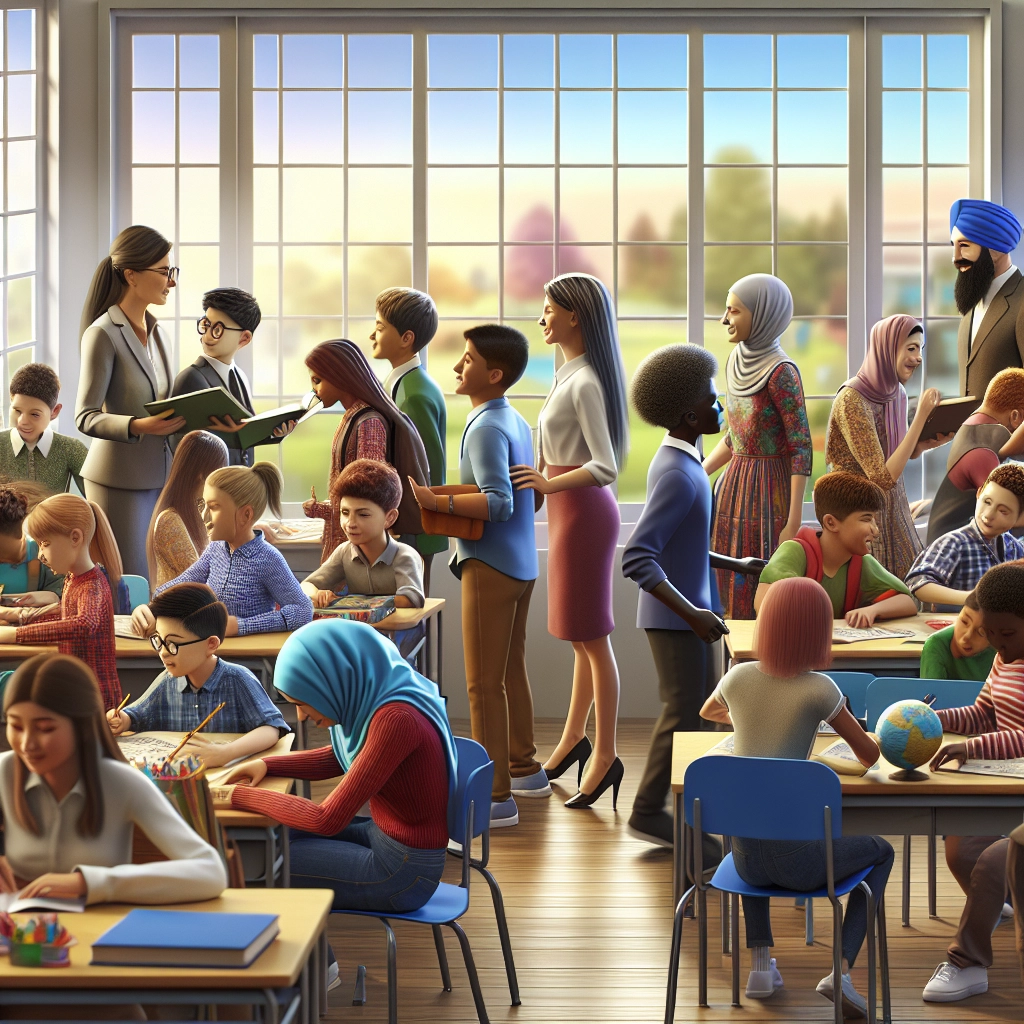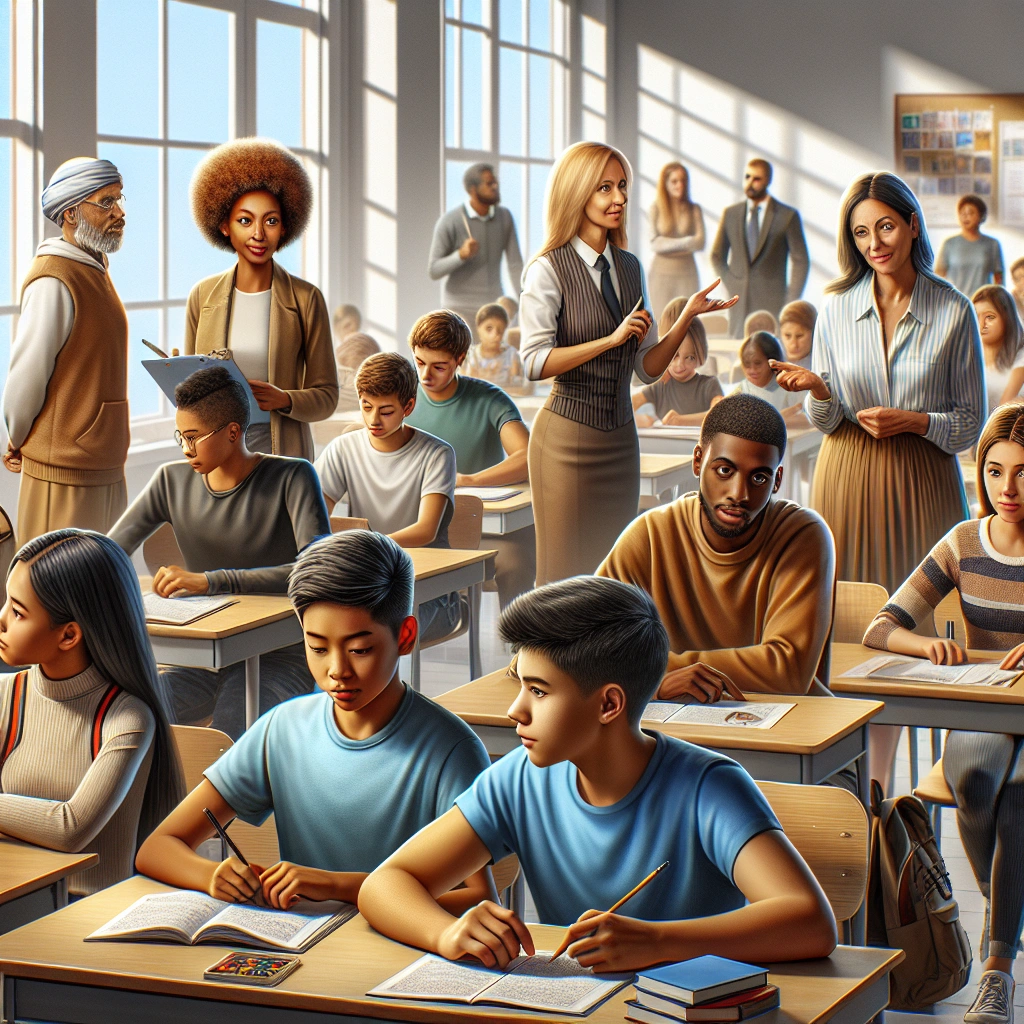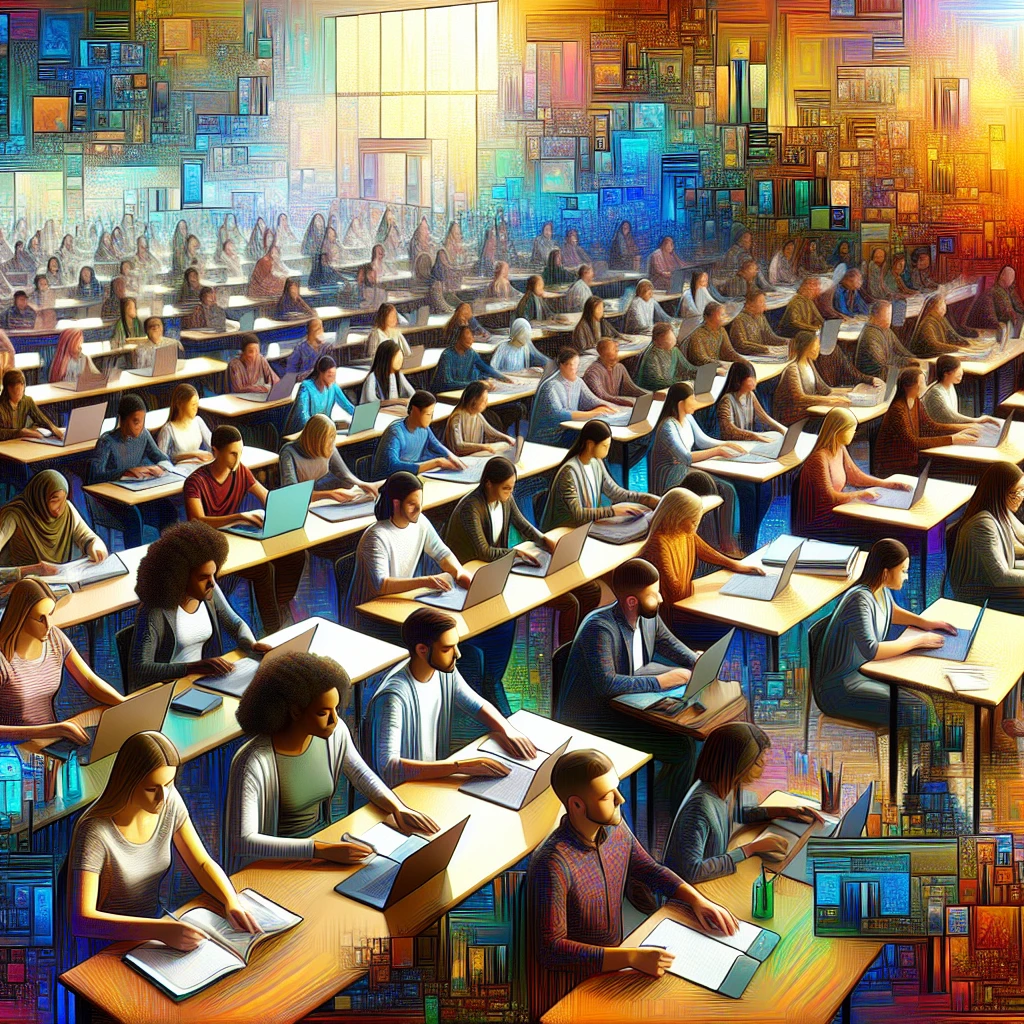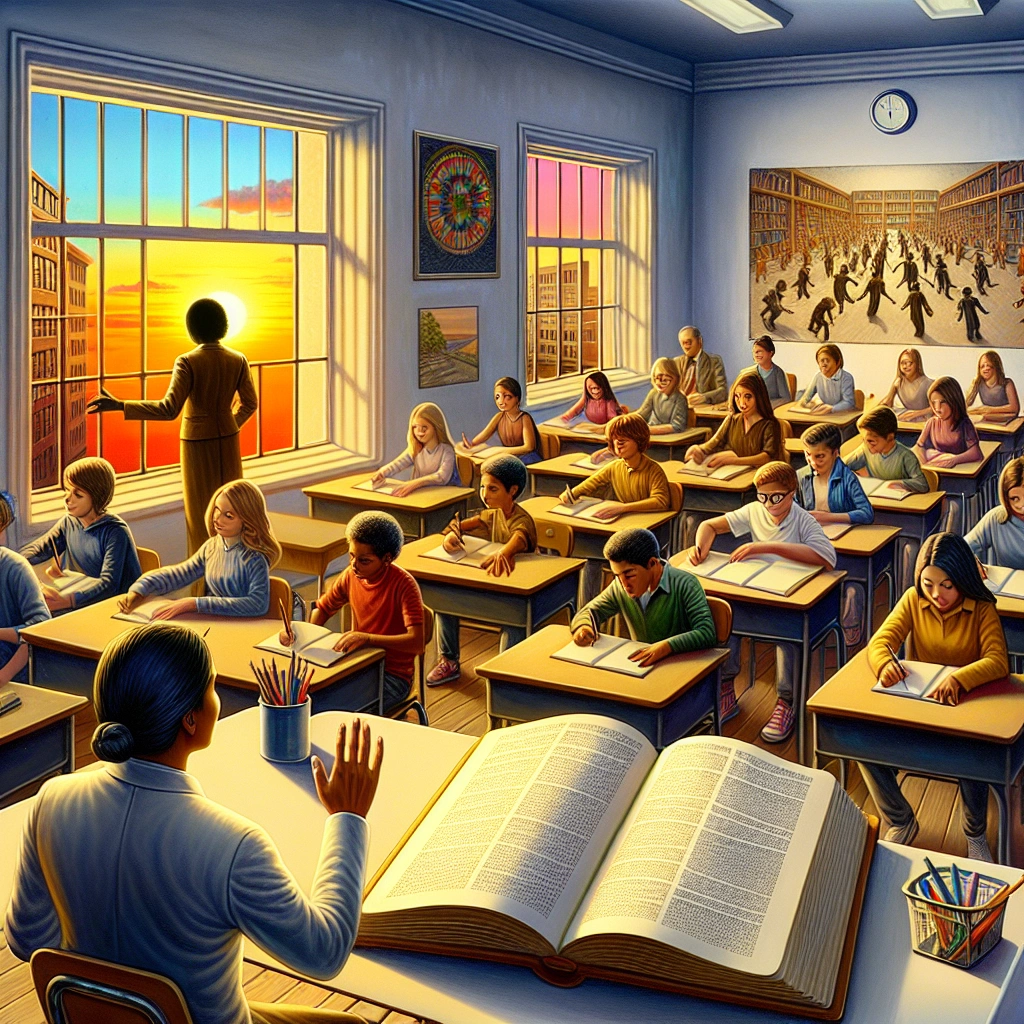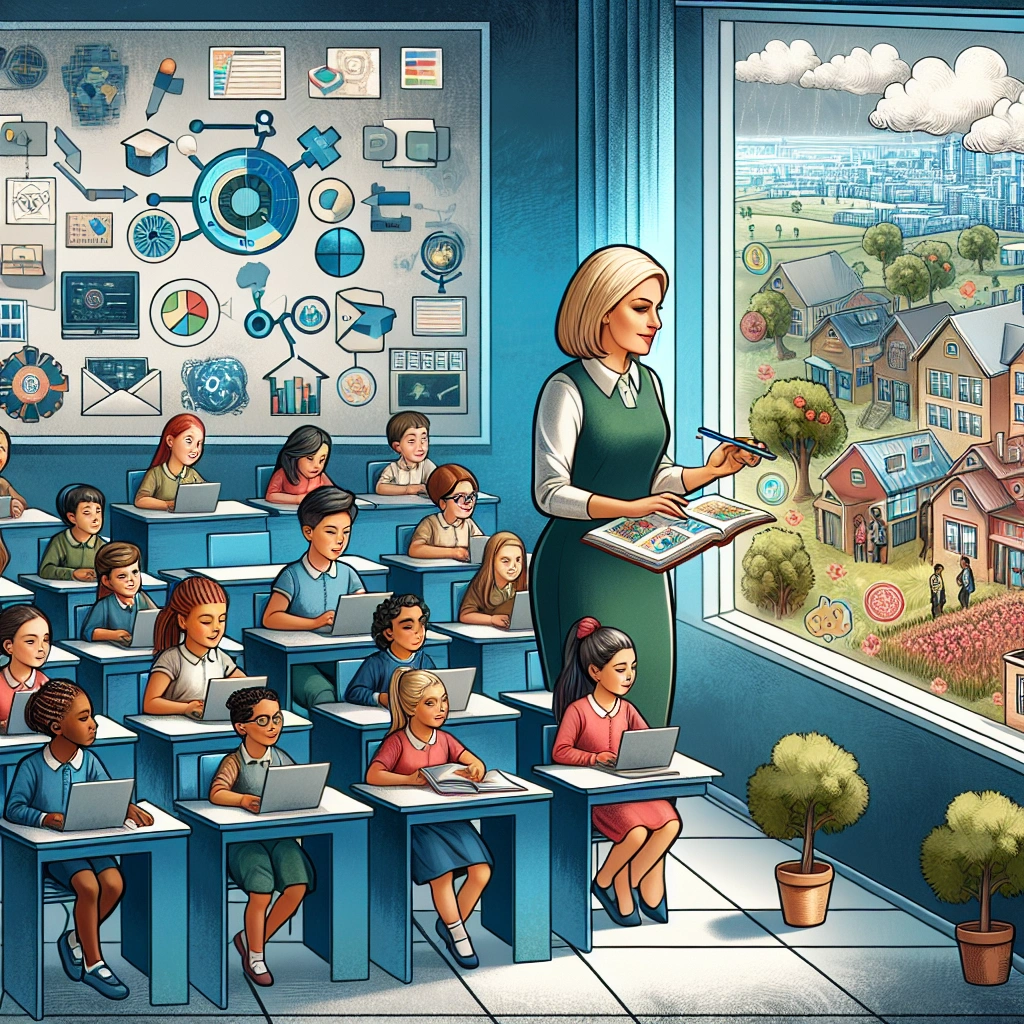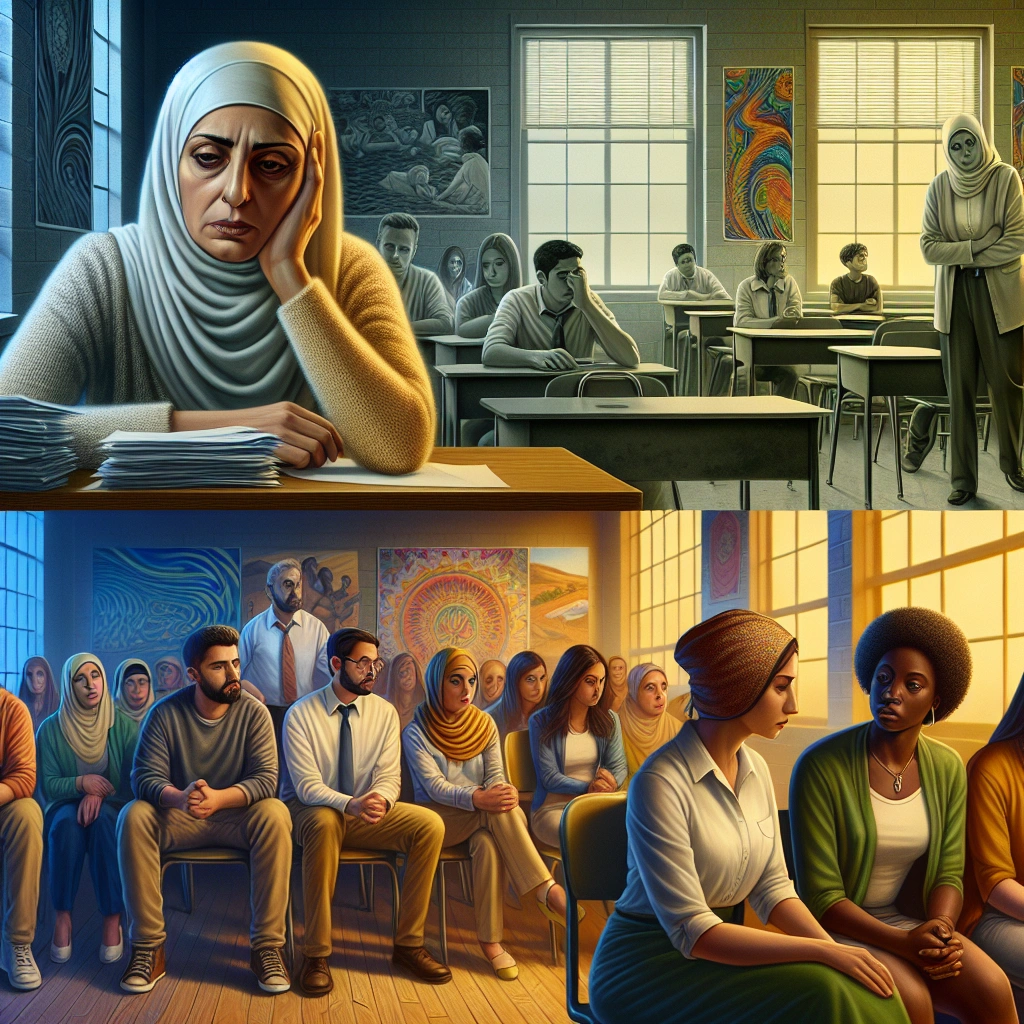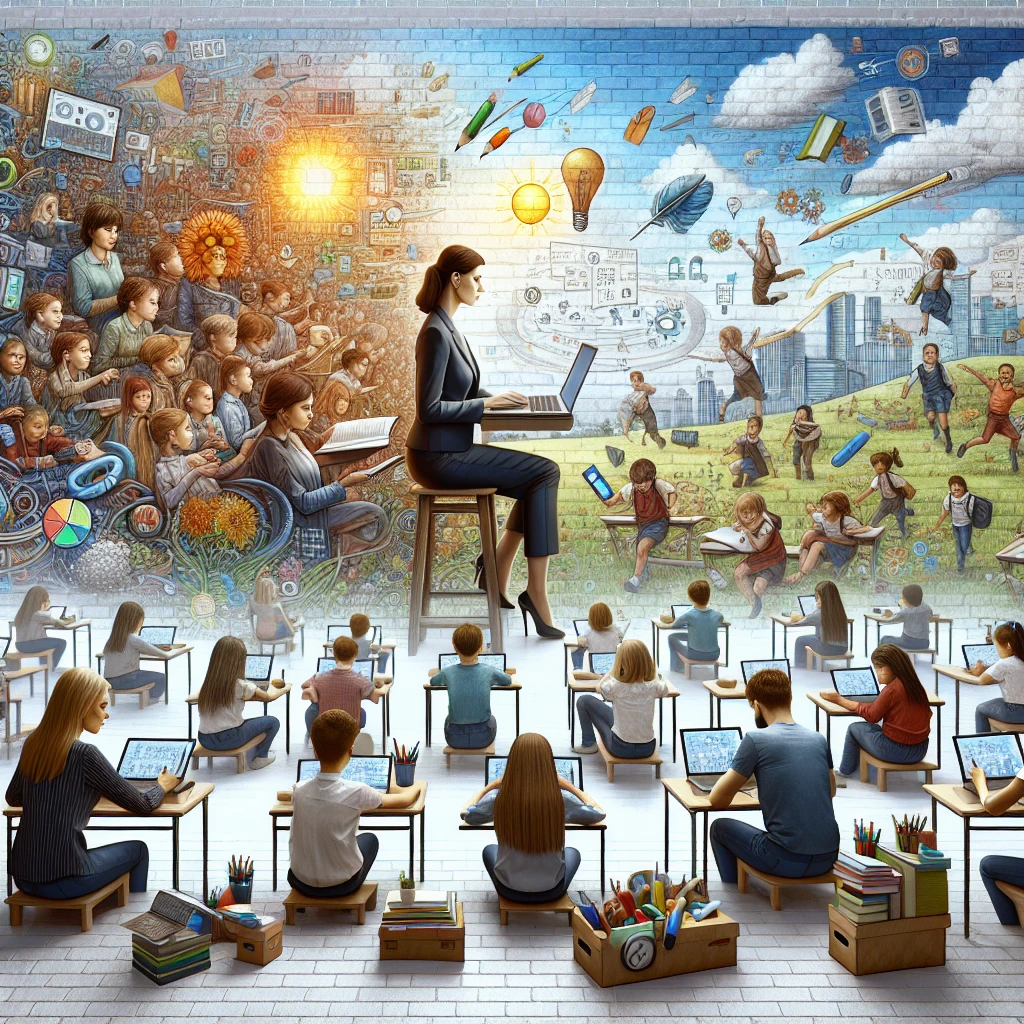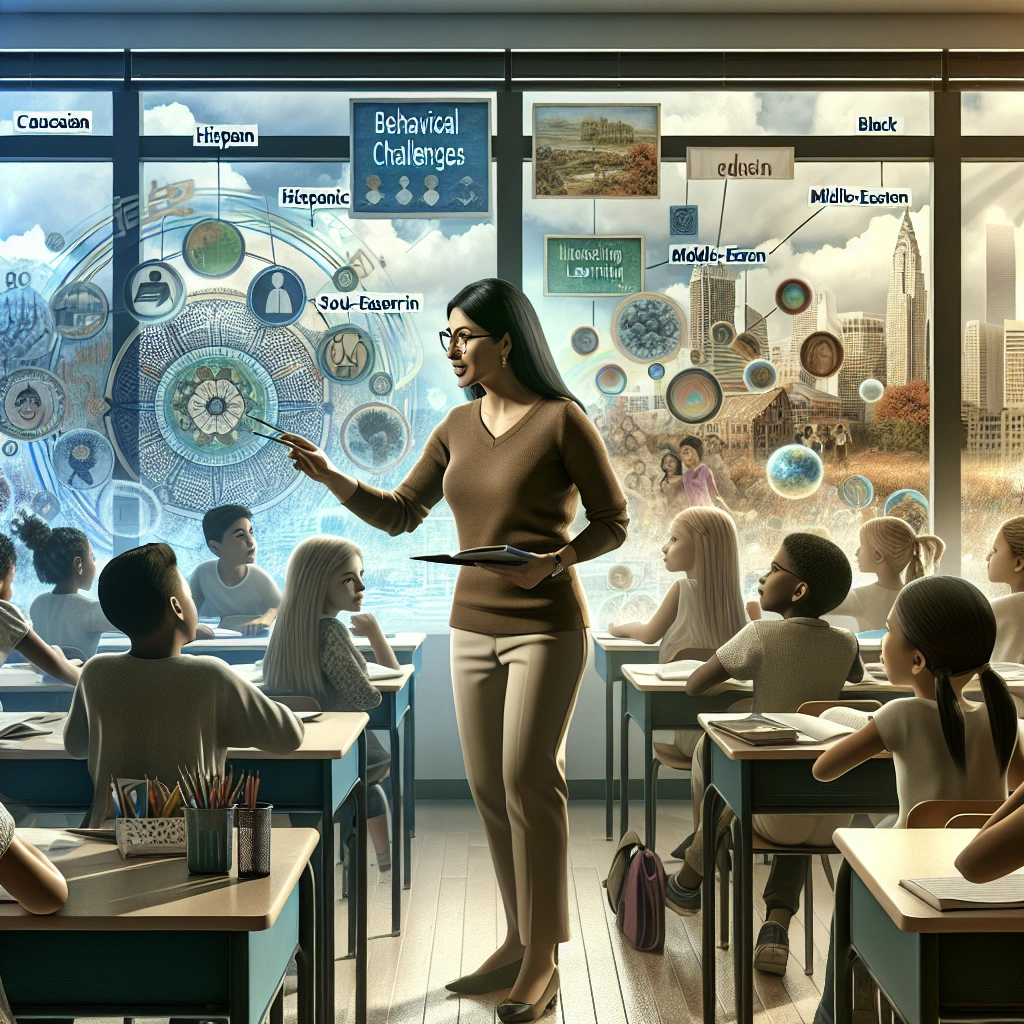Challenges Faced By Teachers In The 21st Century: An Essay


In the 21st century, teachers face various challenges such as understanding different learning styles and lack of effective communication. It is important to address these challenges to ensure that students receive quality education and are able to succeed in the modern world.
By overcoming these challenges, teachers can develop key skills and provide students with the support they need to thrive in the 21st century.
Check out this Youtube video: “Changing Role of a Teacher in 21st Century | Dawn Taylor” to gain insight into the challenges faced by teachers in the 21st century and how their role is evolving to meet the needs of today’s students.
Technological Advancements
Integration of technology in the classroom
In the 21st century, the integration of technology in the classroom is imperative to enhance students’ learning experiences. Adopting a 1:1 initiative, where each student has access to a device, allows for seamless integration of technology into the curriculum.
This facilitates personalized learning, encourages collaboration, and equips students with essential digital skills for the future. Moreover, incorporating technology in education fosters engagement, facilitates active participation, and sparks students’ curiosity and quest for knowledge.
Balancing traditional teaching methods with technology
Achieving a balanced approach between traditional teaching methods and technology integration is essential for effective and dynamic learning experiences. Teachers can blend traditional teaching with technology by delivering in-person lessons while leveraging educational tools to enhance the overall learning process.
This approach offers students a solid foundation through traditional methods while harnessing the benefits of technology to engage, communicate, and assess students in innovative ways.
| Traditional Teaching Methods | Technology Integration |
|---|---|
| In-person delivery of lessons | Integration of interactive educational software |
| Providing guidance and support | Utilizing technology for student engagement and assessment |
| Fostering a solid foundation of knowledge | Personalized learning through digital tools |
This balanced approach enables educators to create comprehensive and dynamic learning environments that cater to the diverse learning needs of students, promoting active participation and knowledge acquisition. Furthermore, technology empowers teachers to deliver engaging lessons while ensuring equitable learning opportunities for all students, setting them up for success in their educational journeys and future careers.
Student Engagement
Addressing short attention spans
To combat short attention spans in the 21st century classroom, teachers can incorporate interactive and dynamic teaching methods. Utilizing short videos, integrating one-question quizzes, and changing up the lesson formats frequently can help sustain students’ interest.
Additionally, encouraging students to take breaks from screens and engage in physical activities can contribute to improved focus and attention during class.
Creating interactive and engaging lessons
Interactive lessons that promote student engagement can be achieved through various methods. Incorporating real-world challenges, creating student-centered activities, and utilizing technology to foster collaboration are effective techniques.
Using interactive teaching strategies, such as debates, brainstorming, and simulations, can make learning more interactive and enjoyable. Furthermore, integrating elements of mystery and curiosity into lesson plans can captivate students’ attention and promote active participation.
Diverse Learning Needs
To cater to different learning styles, teachers need to understand that each student processes information differently. For example, visual learners thrive in an environment with visual aids like diagrams and charts, while auditory learners benefit from discussions and oral presentations.
By recognizing and incorporating various teaching methods such as hands-on activities, group work, and multimedia presentations, educators can effectively reach students with diverse learning styles.
Supporting students with special needs encompasses creating an inclusive learning environment through proactive measures. For instance, eliminating distractions, providing extra time for assignments, and offering individualized instructions are essential strategies.
Moreover, developing inclusive classrooms involves using inclusive language on all forms, stocking library shelves with diverse books, and maintaining a welcoming bulletin board to ensure that every student feels included and valued.
| Learning Styles | Special Needs Support |
|---|---|
| Visual | Eliminate distractions, provide visual aids |
| Auditory | Encourage discussions, offer oral presentations |
| Kinesthetic | Introduce hands-on activities, promote group work |
Implementing these approaches not only enhances the learning experience for every student but also fosters a more supportive and nurturing academic environment.
Classroom Management
In the digital age, classroom management has become even more challenging due to the prevalence of digital distractions and disruptions. Teachers now face the task of effectively managing these distractions to ensure a focused and conducive learning environment.
Implementing strategies to address digital distractions such as social media notifications and cyberbullying is crucial in maintaining discipline in the classroom.
Additionally, striking the right balance between authority and empathy is essential in managing a classroom effectively. It is important for teachers to establish clear rules and expectations from the beginning, while also demonstrating understanding and empathy towards students’ experiences and emotions.
Building empathy in the classroom helps create a supportive and inclusive learning environment, fostering positive relationships between students and educators.
Navigating discipline in the digital age and finding the right equilibrium between authority and empathy are pivotal components of effective classroom management in the 21st century.
Work-Life Balance
Managing workload and administrative tasks can be a daunting challenge for teachers in the 21st century. With a myriad of responsibilities such as lesson planning, grading, and administrative duties, it’s crucial for educators to prioritize tasks effectively to maintain a healthy work-life balance.
By identifying and categorizing tasks based on urgency and impact, teachers can streamline their workload and prevent feeling overwhelmed.
Addressing mental health and burnout is another critical aspect of work-life balance for teachers. The demanding nature of the profession can lead to mental fatigue and burnout if not managed effectively.
Teachers can prioritize self-care strategies such as mindfulness, regular exercise, and seeking professional support to prevent burnout and maintain overall well-being.
| Strategies for Work-Life Balance |
|---|
| Prioritize tasks effectively |
| Establish realistic deadlines |
| Focus on self-care and well-being |
| Prevent burnout by developing self-care strategies |
Managing workload and administrative tasks, along with addressing mental health and burnout, are essential components of achieving work-life balance for teachers in the 21st century.
Professional Development
Keeping up with changing educational trends
In today’s rapidly evolving educational landscape, teachers encounter a plethora of challenges in keeping up with changing trends. The increasing prevalence of mastery-based grading, personalized learning, and trauma-informed practices necessitates that teachers stay abreast of these developments.
For instance, participating in professional development workshops and conferences can provide educators with insights into these trends. Additionally, utilizing practical resources such as digital platforms and educational associations can facilitate their understanding of these evolving practices.
Continuous learning for teachers
Continuous learning is imperative for teachers to adapt to the ever-changing educational environment. By engaging in ongoing professional development courses, teachers can enhance their knowledge and expertise in areas such as digital citizenship, bite-sized learning, and other emerging pedagogical approaches.
Furthermore, consistent engagement with scholarly literature and research can contribute to their continuous learning journey. Through these proactive measures, educators can better equip themselves to address the challenges posed by the 21st-century educational landscape.
Parental Involvement
Collaboration with parents in the digital era
In today’s digital era, collaboration with parents has become more critical than ever. With the rise of technology, parents are more involved in their children’s education through digital platforms.
Educators can leverage this by using communication apps like ClassDojo and Spotlight to keep parents updated about school activities and their child’s academic progress. Additionally, YouTube and social media serve as effective mediums to connect with parents and provide them with essential information.
By embracing technology, schools can bridge the gap between educators and parents, fostering a deeper partnership in supporting students’ learning.
Managing parental expectations
Managing parental expectations is paramount in creating a harmonious relationship between schools and parents. With increased technology usage and digital literacy, parents have higher expectations regarding their involvement in their child’s education.
To meet these expectations, schools should establish open, regular, and flexible communication channels, such as video conferences, emails, and online platforms. By setting realistic expectations, encouraging parent autonomy, and engaging in transparent communication, schools can effectively address and manage the heightened expectations of parents, ensuring a collaborative approach towards student success.
Standardized Testing
Preparation for high-stakes assessments involves equipping students with problem-solving trends that enable them to see the big picture in various scenarios. Educators use teaching test-taking strategies, conduct practice tests, and review sessions to effectively prepare students for high-stakes testing.
Stress and anxiety management are also crucial in ensuring students are adequately prepared for these assessments. However, standardized test scores are not reliable predictors of future success as they solely evaluate rote knowledge, neglecting creativity, problem-solving, critical thinking, and artistic abilities.
Preparing students for high-stakes assessments
Preparing students for high-stakes assessments involves capturing their baseline understanding before rigorous practice. A well-executed benchmark strategy can considerably benefit students during preparation for such testing.
It is essential for educators to focus on guiding students through the process and laying a strong foundation before engaging in rigorous practical sessions.
Addressing the limitations of standardized testing
Standardized tests have limitations as they fail to measure essential aspects such as creativity, problem-solving skills, and critical thinking, leading to an inaccurate assessment of student progress. Moreover, these tests can be subjective and may lead to misjudgment of a student’s abilities.
Critics argue that standardized tests are not effective gauges of progress and can perpetuate racial, class, and gender biases while proponents suggest that they offer objective measurements and provide meaningful data to identify areas for improvement.
| Advantages of Standardized Testing | Disadvantages of Standardized Testing |
|---|---|
| 1. Positive impact on student achievement | 1. Inaccurate assessment of student progress |
| 2. Objective measurement of education | 2. Neglect of critical skills such as creativity and problem-solving |
| 3. Good metric for identifying areas for improvement | 3. Potential perpetuation of biases |
Preparing students for high-stakes assessments requires a comprehensive approach that considers the limitations of standardized testing. It is vital for educators to address these limitations while preparing students, ensuring a well-rounded educational experience.
Curriculum Adaptation
Flexibility in the face of rapidly changing knowledge
Today, teachers face the formidable task of staying ahead of the curve when it comes to the ever-evolving landscape of knowledge. With advancements in technology and global changes, the traditional teaching methods no longer hold water.
Teachers must embrace flexibility and adaptability to integrate the latest information into their curriculum. This means being open to incorporating new subjects, adjusting teaching approaches, and regularly updating course content to mirror the real-world scenarios.
Integrating real-world skills into the curriculum
In the 21st century, it’s crucial for educators to bridge the gap between theoretical learning and practical application. Integrating real-world skills into the curriculum offers students the opportunity to develop critical thinking, creativity, problem-solving, collaboration, and communication skills.
By creating learning experiences that mirror real-world challenges, teachers empower students to navigate the complexities of modern society and workplace demands effectively. This approach fosters a more holistic and immersive learning experience, preparing students for the world beyond the classroom.
Language and Cultural Diversity
Supporting ESL students
“Helping ESL students thrive in the classroom is crucial for their success. Using visual aids, providing written instructions, and incorporating closed captioning in multimedia content are effective strategies.
Additionally, offering voice-to-text options and encouraging students to use gestures for better communication can make a significant difference in their learning experience.”
Fostering cultural sensitivity and inclusivity
“Fostering cultural sensitivity and inclusivity in the classroom is essential for creating an environment where diversity is celebrated. Teachers can express genuine interest in students’ ethnic backgrounds, encouraging them to share their traditions and beliefs.
It’s also important to celebrate differences in cultural practices and social behaviors. Creating a culturally responsive classroom where language diversity is embraced will contribute to a more inclusive and supportive learning environment for all students.”
| ESL Student Support Strategies | Cultural Sensitivity and Inclusivity in the Classroom |
|---|---|
| Visual aids | Expressing interest in students’ ethnic backgrounds |
| Written instructions | Celebrating differences in cultural practices |
| Closed captioning in multimedia content | Encouraging students to share their traditions and beliefs |
| Voice-to-text options | Creating a culturally responsive classroom |
| Use of gestures for communication | Embracing language diversity for an inclusive environment |
Classroom Resources
Access to adequate teaching materials
Lack of proper resources in classrooms is a significant challenge faced by teachers in the 21st century, impacting the quality of education. Many teachers are forced to spend their own money to supply essential materials like books, pencils, and paper for their students, resulting in financial strain.
This lack of access to teaching materials can contribute to ineffective teaching and learning, hindering students’ academic progress and overall development.
Funding and resource allocation challenges
Another prevalent challenge is the inadequate funding and resource allocation in the education sector. Public education funding in the U. S. heavily relies on state and local resources, leading to significant disparities in educational resources across different regions.
As a result, decreasing budgets are impacting student learning, with school funding issues directly linked to decreased student achievement. The inefficient allocation of resources poses barriers and challenges for districts and schools to ensure equitable access to quality education.
Policy Changes
Navigating shifts in education policies can be a complex and ever-changing landscape for teachers in the 21st century. Whether it’s adapting to new teaching methodologies, integrating technology into the classroom, or addressing the impact of COVID-19, teachers are at the forefront of these policy changes.
They are required to constantly evolve to meet the demands of a rapidly changing educational system, while still maintaining high-quality teaching standards.
Advocating for teacher rights and needs is essential in ensuring that educators have the resources and support necessary to deliver impactful education. Teachers play a critical role in shaping policy changes that directly affect their classroom dynamics, workload, and overall well-being.
By advocating for equitable funding, professional development opportunities, and fair evaluation systems, teachers can ensure that their voices are heard and their needs are considered in policy decisions.
Teacher Evaluation
Ensuring fair and effective evaluation methods
One example of ensuring fair and effective evaluation methods is through the use of comprehensive and systematic processes, particularly when evaluation is for personnel decision-making. This can involve methods such as classroom observations, teacher contributions to student achievement growth, and student perceptions of teacher effectiveness, providing a holistic view of teacher performance.
Balancing accountability and support for teachers
Achieving the delicate balance between accountability and support for teachers is essential for their professional development. This can be done through evidence-based practices and interventions to support school improvement plans, ensuring that teachers receive the necessary support while being held accountable for their contributions to student success.
School Community
Building positive relationships with colleagues and administration
Building positive relationships with colleagues and administration is crucial for a thriving school community. Teachers can achieve this by being authentic and present.
By being trustworthy and avoiding gossip, teachers can build a strong rapport with their peers. They should also foster a sense of connectedness by engaging in activities that allow them to get to know their colleagues on a personal level.
This can vastly improve teamwork and collaboration, leading to a more positive and supportive work environment.
Fostering a supportive and collaborative school culture
Fostering a supportive and collaborative school culture is essential for the well-being of both staff and students. Establishing a safe and emotionally supportive environment is paramount.
Celebrating achievements and promoting positive behavior, as well as creating and upholding school norms, contributes to a positive school culture. Additionally, creating meaningful parent involvement and promoting respectful interactions among students and staff can foster a collaborative atmosphere.
| 6 Benefits of a Connected School Community | |
|---|---|
| 1 | Enhanced learning outcomes |
| 2 | Improved collaboration and wellbeing |
| 3 | Increased support for the entire school community |
| 4 | Positive impact on school climate and success |
| 5 | Reduced teacher turnover |
| 6 | Higher levels of student attendance and engagement |
By nurturing trusting relationships and fostering a supportive and collaborative school culture, educators can create an environment where every member feels valued and supported, ultimately leading to a more positive and effective educational experience for all.
Mental Health Support
Addressing mental health challenges in the teaching profession
Teachers face significant mental health challenges in the 21st century, exacerbated by the demanding nature of their profession and the additional stressors brought about by events like the COVID-19 pandemic. It is crucial to address these challenges by creating a supportive and understanding environment within educational institutions.
Providing regular mental health check-ins, access to counseling services, and destigmatizing conversations around mental wellness are essential steps in addressing these challenges.
Providing resources for teacher well-being
In order to support teacher well-being, it is imperative to provide a range of resources such as stress management workshops, mindfulness training, and access to mental health professionals. Additionally, creating a positive work environment, offering flexible work arrangements, and encouraging work-life balance are instrumental in promoting teacher well-being.
Recognizing and addressing mental health challenges in the teaching profession is vital for fostering a healthy and thriving educational community.
Recommended Amazon Products for Challenges Faced by Teachers in the 21st Century
Here’s a curated list of products that can help address various challenges faced by teachers in the 21st century.
Classroom Management Software
This software helps with digital classroom management, making it easier for teachers to organize and monitor student activities. The software also allows for easy communication with students and parents.
Wireless Presenter Remote
A wireless presenter remote is a great tool for keeping students engaged during presentations. It allows teachers to move around the classroom while still controlling their slideshows, enhancing student engagement.
Ergonomic Classroom Chair
An ergonomic classroom chair helps to address the issue of teacher’s work-life balance by providing comfort during long hours of teaching. It also promotes better posture and reduces the risk of back pain.
Professional Development Books
Books on professional development can assist teachers in staying updated with changing educational trends. Continuous learning is crucial for teachers, and these books provide valuable insights and strategies.
Collaborative Whiteboard
A collaborative whiteboard encourages interactive and engaging lessons for students. It also supports different learning styles and can be a great tool for addressing language and cultural diversity.
Top Recommended Product for Challenges Faced by Teachers in the 21st Century
If you’re looking for the best solution for addressing the challenges faced by teachers in the 21st century, we highly recommend the Professional Development Books. These books provide valuable insights and strategies for continuous learning and staying updated with changing educational trends.


| Product | Pros | Cons |
|---|---|---|
| Classroom Management Software | – Organizes and monitors student activities – Easy communication with students and parents | – Costly for some schools – Learning curve for some teachers |
| Wireless Presenter Remote | – Enhances student engagement – Allows for teacher mobility | – Requires batteries – Potential risk of loss or damage |
| Ergonomic Classroom Chair | – Promotes better posture – Reduces risk of back pain | – Costlier than standard classroom chairs – Limited color options |
| Professional Development Books | – Provides continuous learning – Offers valuable insights and strategies | – Requires time to read and implement – May need to be updated regularly |
| Collaborative Whiteboard | – Encourages interactive lessons – Supports different learning styles | – Installation and maintenance costs – Limited availability in some schools |
Ready to address the challenges faced by teachers in the 21st century? Check out Professional Development Books today for the best results!


Conclusion
Teachers in the 21st century face numerous challenges such as adapting to rapidly changing technology, addressing diverse student needs, and managing larger class sizes. These challenges require innovative solutions and ongoing professional development to help educators effectively meet the needs of their students.
Moreover, it is crucial for policymakers, school administrators, and communities to come together to provide support for teachers. This can be done through funding for resources and technology, creating professional development opportunities, and promoting collaboration among educators.
By addressing these challenges and supporting teachers, we can ultimately improve the quality of education for all students.
It is essential for everyone to recognize the challenges faced by teachers and take action to support and empower them. Through collaboration, investment in resources, and ongoing professional development, we can work towards a more effective and sustainable education system for the 21st century.

